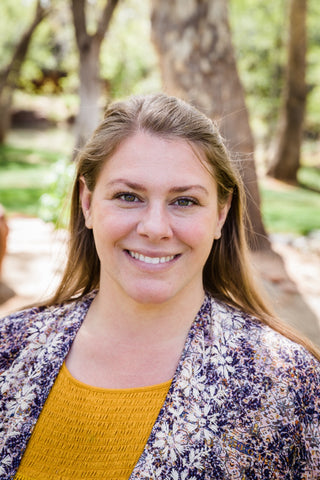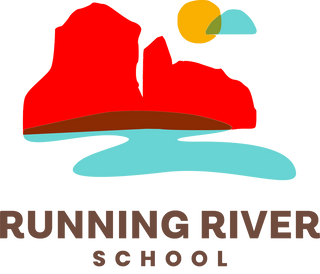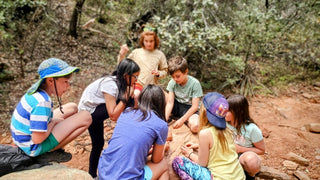Curriculum Overview
- Theme: Norse mythology, Native American stories, the animal kingdom
- Fractions, long division, averages, factoring, simple geometric forms
- Grammar, composition, research project, drama
- Animal physiology, environmental science
- Arizona history and geography, map making
- Watercolor, form drawing, clay modeling
- Recorder/flute, choir, violin (as available)
- Spanish
- Class Play
- Physical Education/Movement/Games
Life Skills
- Participate in individual and collaborative work
- Participate in social activities and practice social inclusion of others
- Demonstrate awareness of group needs and respond with appropriate action and willingness to help
- Show respect for teacher, classmates, property, and materials
- Work with positive attitude and be open to feedback even through difficulties
- Exhibit self-discipline and personal responsibility
Detailed Curriculum
Fourth grade marks a shift in the development of children, as well as how a teacher meets certain aspects of the child through the curriculum. Having passed through the nine-year-change, the child is ready for more concrete tasks and more readily recognizes their place in the world. Children begin to form their personality in response to their experience of the world, consciously choosing those qualities that will become a part of their characters.
The telling of Norse myths and sagas strongly echoes this element of conscious choice in a manner that poetically focuses on strength and boldness, demonstrating dramatic consequences and deeds of courage. They are also brought in order to address the ever-changing emotions of the fourth grade child. The stories contain moments of humor, anger, suspense and tragedy and give the students imaginative content through which they can explore their emerging, rich emotional life.
This new consciousness is also met through the study of local geography and local history, as well as a deeper study of animals. The child at this age tends to be more self aware, and thus is ready to take up greater academic challenges. Fourth grade offers the child the opportunity to engage in their first “research” project through the study of animals.
Each of the other parts of the curriculum support the fourth grade child in finding and knowing their place, and in being comfortable in the developmental time in which they find themselves.
Language Arts
- Writing
- Reading
- Spelling
- Grammar
- Speech Formation/Dramatics
- Personal Letter Writing
- Composition
In composition, simple narration of the child's own real experiences continues into a more in-depth study of English grammar. Paragraph and short story writing focus on clarity and descriptiveness.
Mathematics
- Fractions
- Long Division
- Long Multiplication
- Geometric Movement
The world, once exhibiting a magical wholeness, is now seen by the ten-year-old as broken into many parts. This is the appropriate time for studying fractions. Fractions are introduced with concrete objects to demonstrate truths before forming mental concepts. Fraction work continues with adding, subtracting, multiplying dividing, expanding and reducing.
Natural Sciences
- Zoology
- Gardening
- Farming
- Cooking
The study of the animal kingdom affords the children an opportunity to study the relationships that exist between human and animals. Gardening and farming continues on in the combined 3/4 classroom, naturally complementing the deeper study of the animal kingdom.
Earth Sciences
- Local Geography
- Map Making
Simple map making is introduced focusing on travel routes, home and school. This process leads the student to a study of Arizona geography.
Social Sciences
- Norse Mythology and Sagas
- Arizona History
- Native American History
- Early Settlers
Native American stories and map drawing provide a connection between history and local geography.
Fine Arts
- Watercolour Painting
- Form and Freehand Drawing
- Modeling
- Class Play
The importance of the fine arts in a well-rounded education is described in detail in this great article, "Drawing with Hand, Head and Heart: Beyond the Right Side of the Brain"
Handwork
- Cross Stitch
- Embroidery
- Felting
Handwork plays an important function in helping to develop the will of the child, in fostering self-esteem and an appreciation for beauty. It also plays a critical part in helping to establish and activate pathways in the brain that link the left and right side of the brain and also act as a general network in each hemisphere. To support fine motor skills and assist in mathematical learning, knitting, crocheting and sewing are exceptional tools that support quiet study and concentration. The hands are the primary instrument that growing children use to inform themselves about the world in which they live. What the hand feels the brain knows.
Music
- C Flute
- Choir
Songs, rhythm activities and the further study of the flute are all a part of the elementary years. In the 4th grade, students, in some schools, are introduced to stringed instruments. In our case they start with ukulele. The children's newly strengthened individuality provides them the ability to hold their own in part singing; canons and rounds form a natural bridge to this exciting new skills.
Physical Education
- Cooperative Games
- Nature Walks/Hikes
- Nature-Based & Curriculum-Related Field Trips
- Recess/Free Play
Physical activity is a key component in Waldorf education. Seen as a necessity for all children, movement throughout the day supports learning and physical development.

Fourth Grade Teacher
Erika Witkop
Ms. Erika has a diverse background of experience with children, including special education, remedial support, subbing, assisting, and teaching yoga. She is committed to helping guide and assist her students to achieve their goals while instilling a love of learning and understanding their place in community.
Admissions Inquiry
Running River School uses an open enrollment model whereby a student may enroll at any point in the year (up through April 15). Please inquire about openings or to be placed on a waitlist.

